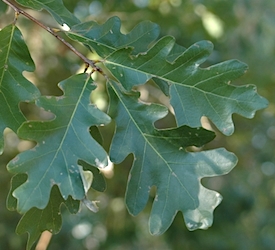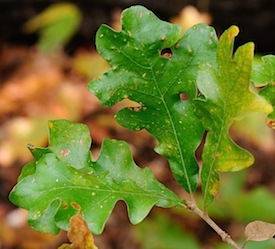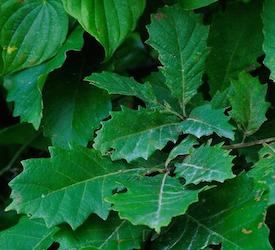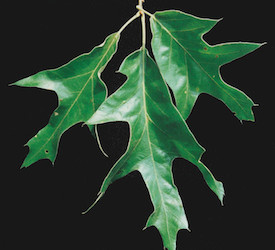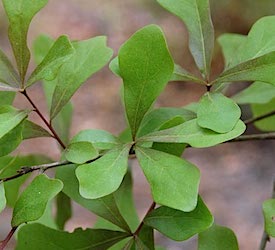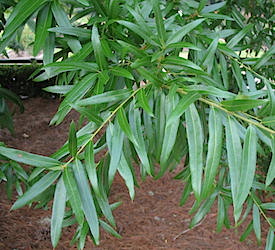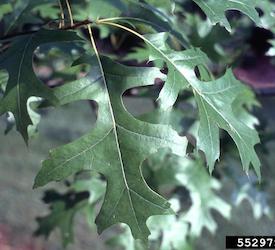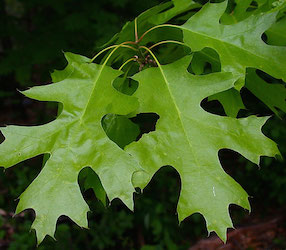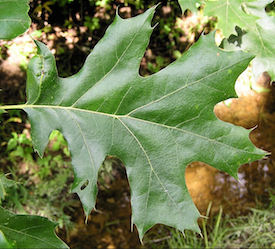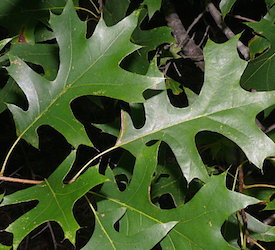Oaks
Click on the name of the tree below the image to see details for that species.
All oak trees are in the genus Quercus. Quercus is the classical Latin name for oaks; it is believed to be from Celtic, meaning "fine" and "tree."
Acorns are the seeds of oak trees; the flowers are called catkins, or tassels. Both of these can be considered "annoyances," as people can slip and fall on acorns, and the catkins often get stuck and clog up gutters.
There are two big families of oaks: white oaks and red oaks. The many differences between them are important, especially if you have them growing in your yard. Here is a comparison of the key features of trees in the two oak families.
Distribution: White oaks are found throughout the northern hemisphere worldwide; red oaks are found only in North America.
Leaves:
White oak leaves have rounded tips (lobes).
Red oak leaves have pointed tips (except water oaks, which have rounded leaves).
Fruit Acorns (mast):
White oak acorns are produced every year, providing lots of food for wildlife and probably more cleanup for you. Acorns from this oak group are edible. They have little tannin (an acid used in the production of leather and ink), making them not as bitter as others. The Eastern white oaks have the best acorns. They can be ground into flour, out of which bread can be made. The inner surface of the acorn shell is smooth.
Red oak acorns are produced every other year. They are high in tannin content. You have to grind them up into mush, and leech them in water (changing the water several times) to remove the very bitter taste and make them palatable. The inner surface of acorns is lined with wooly hairs.
Wood:
White oak wood is desirable for furniture-making because most of the pores in the wood are closed, which makes the wood very hard. White oak wood has a somewhat pleasing odor when cut.
Red oak wood has open pores, making it less durable than white oak, though it, too, is used for woodworking. Fresh cut red oak smells somewhat like dog feces, so don’t pack it into your basement for curing.
Picture credits:
White Oak: Chris Evans, University of Illinois, Bugwood.org
Post Oak: Vern Wilkins, Indiana University, Bugwood.org
Swamp Chestnut Oak: Vern Wilkins, Indiana University, Bugwood.org
Southern Red Oak: Mike Hogan, www.auburn.edu
Black Oak: Paul Wray, www.extension.iastate.edu
Water Oak: Chris Evans, University of Illinois, Bugwood.org
Willow Oak: onlineplantguide.com
Scarlet Oak: T. Davis Sydnor, The Ohio State University, Bugwood.org
Northern Red Oak: Peter Dziuk, minnesotawildflowers.info
Pin Oak: Will Cook, Carolinanature.com

